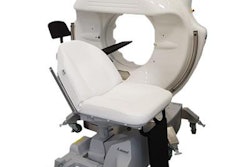Dear CT Insider,
As well-established as CT is in radiology, technological advancements continue to push the imaging modality to new heights. And this progression has been no more apparent than in the growing integration of cinematic rendering into the CT workflow.
In a recent study, Dr. Elliot Fishman and Dr. Steven Rowe, PhD, of Johns Hopkins University presented a new technique that leveraged the photorealistic quality afforded by cinematic rendering technology to enhance cardiac imaging. Their approach, called black-blood CT, allowed radiologists to look inside the lumen of cardiac vasculature in high detail. Several such black-blood cinematic rendering images are featured in this edition's Insider Exclusive.
Improvements in CT technology have also made way for ultrahigh-resolution CT scanners, which investigators from the U.S. National Institutes of Health have been testing in various clinical settings. Their latest work shows that ultrahigh-resolution CT has roughly double the resolution of conventional chest CT scans without altering radiation dose for patients with metastatic cancers, lung nodules, and various other diseases.
Though slightly farther behind in terms of routine clinical application, photon-counting CT has also demonstrated several advantages over conventional CT, from eliminating electronic noise to increasing iodine signal-to-noise ratio at lower radiation doses. Dr. Cynthia McCollough of the Mayo Clinic in Rochester, MN, discussed these and other benefits of photon-counting CT at the recent International Society for Computed Tomography symposium in San Diego.
These advancements are primed to help healthcare providers address one of the most weighty -- and often controversial -- concerns over CT: excessive CT radiation exposure. A group from South Korea recently substantiated this concern, linking increased radiation exposure to increased cancer incidence in a nationwide study covering millions of youths. Fortunately, efforts such as having lead radiologists establish and regularly update CT protocols at their respective institutions could help curb radiation dose, according to researchers from California.
Finally, CT played a pivotal role in a breaking medical report that exposed the perils of using electronic cigarettes, or vaping. Researchers from various U.S. institutions discussed their rather disconcerting findings in a series of case studies.
These stories represent just a selection of the content available in the CT Community at AuntMinnie.com. Head on over to stay up to date on the latest developments in the field.



















